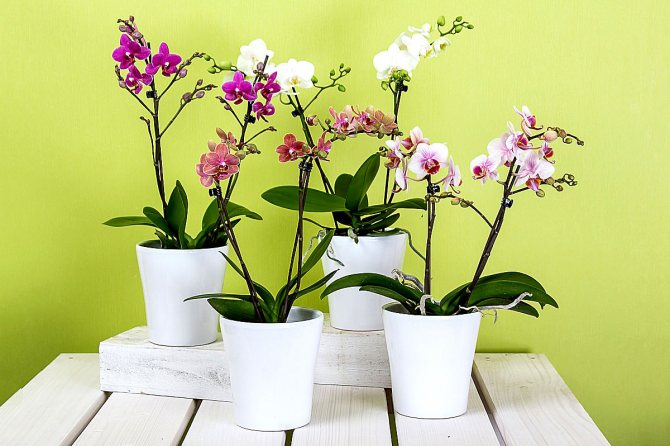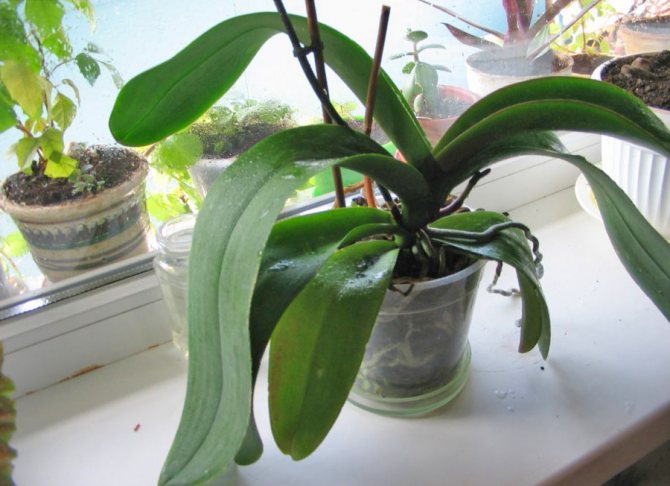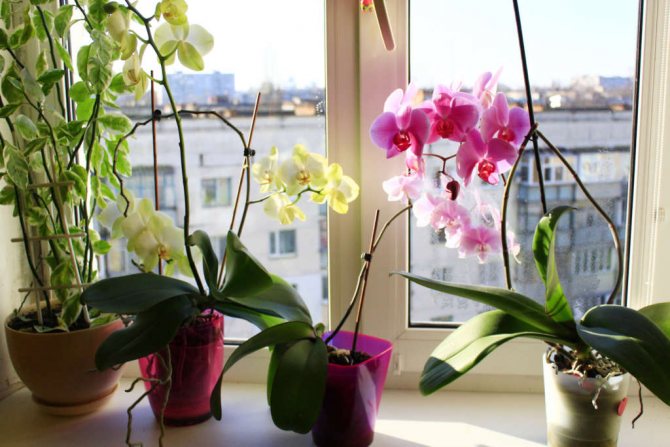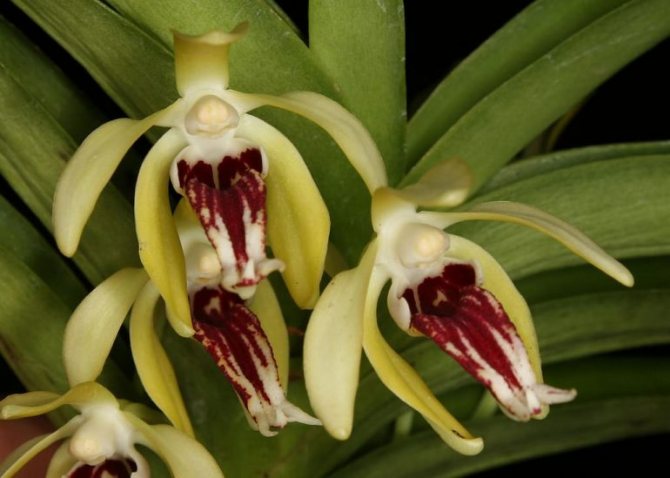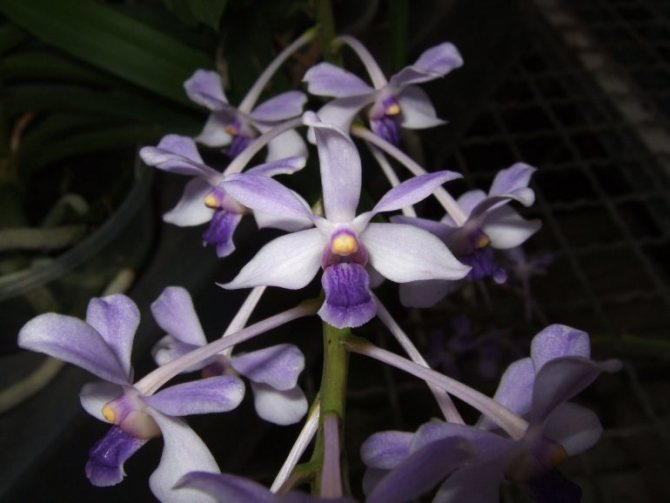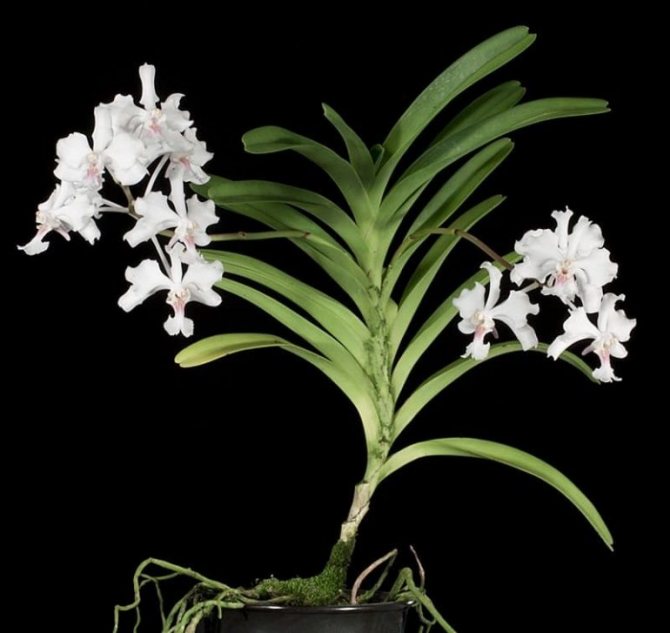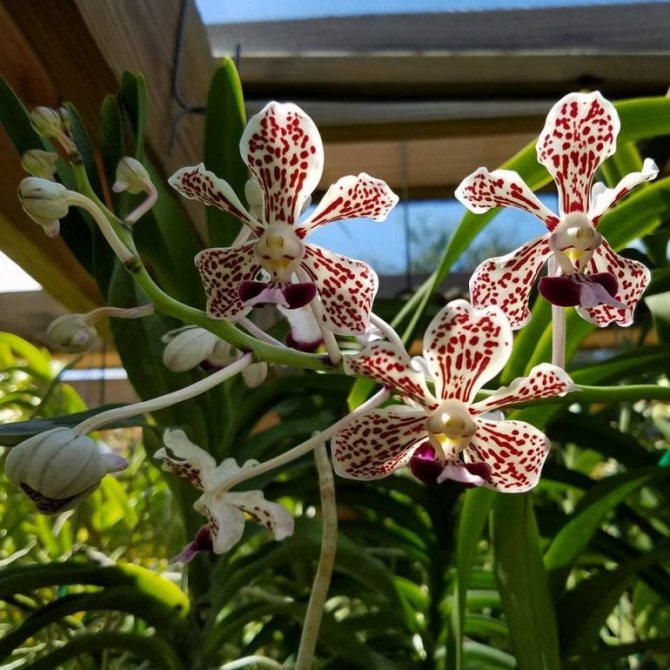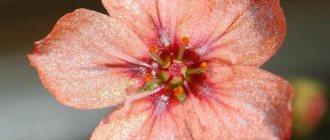Such a tropical plant as the orchid has long been an excellent decoration for homes and apartments. It is also widely used in the interior design of offices and shopping centers. There are florists who successfully grow dozens of various orchids (and even more) in their apartment. It is very easy to understand such flower growers, because a blooming orchid looks very impressive. Each of the varieties of this flower has something unique, original. Bushes can vary both in color and size, and in shape. And when a florist acquires a new orchid, he is convinced that it is more beautiful than all those in his collection. But this is until he has another copy.
Growing orchids at home
I looked after the orchid like a child, but my efforts were in vain - the plant began to droop, the buds crumbled one after the other ... I live in a small town, it is not easy to find specialists in orchid cultivation, so I typed special literature in the library and from friends, stocked up patience and worked a miracle - saved her orchid.
Today in my collection there are already three phalaenopsis - Phalaenopsis Horse, Phalaenopsis Stuart and Phalaenopsis Schiller. All of them are distinguished by long flowering and healthy appearance, and the problems with the first orchid taught me an invaluable lesson: now I have my own secrets in growing these exotic flowers.

So, my advice to all orchid lovers:
- Lavatera: growing from seeds, planting and care
- Make sure that there is always clean boiled water in the saucer in which there is a pot with a blooming orchid.
- Never transplant the orchid during flowering!
- Put a clove of garlic in each pot of orchids: garlic scares away flower flies.
- At night, I turn on a table lamp for my orchids - in the places where they come from, the daylight hours are much longer than ours.
- Orchid roots take part in photosynthesis, so it is best to plant your orchid in a clear plastic pot.
- Orchids need to be watered over the top of the substrate. The water should pass freely through the soil, like a sieve. In this case, the soil is enriched with oxygen.
I would also like to dwell on the problems that most often arise with growing orchids at home
.


Proper nutrition
Orchids have specific nutritional needs and require regular feeding, but not often. The orchid is recommended to be fertilized through watering once a month during the growth of the vegetative part - the leaves. You can use any complex fertilizer with the addition of mineral and organic nutrients. The fertilizer should be formulated taking into account the peculiarities of the orchid and its dietary habits.
In order not to damage the delicate roots of the orchid, follow the instructions and dosage when feeding. The fertilizer stimulates the growth and development of plants, guarantees juicy color of leaves, lush and long flowering.
Difficulties in growing orchids at home
Orchids are dropping buds and leaves
Your orchid may be lacking in light or moisture. Moisten the air in the room, move the pot closer to the window, eliminate drafts.And the reason for the leaves falling off in an orchid may be the proximity to ripe fruits: some of them, for example, apples, emit ethylene, which is very harmful to flowers. My friend had such a case: the children ate in the bedroom, where there are orchids, plums, and in the morning the plant shed several buds. Although it happens that orchids grow in the kitchen, where there are a lot of all kinds of products, and they feel great. In a word, here as you are lucky, but it is better to play it safe and not leave fruit next to them.
Orchid leaves rippled
or they have wrinkled edges. Perhaps the room is too hot, the orchid should feel the temperature difference between day and night at about 8 degrees.
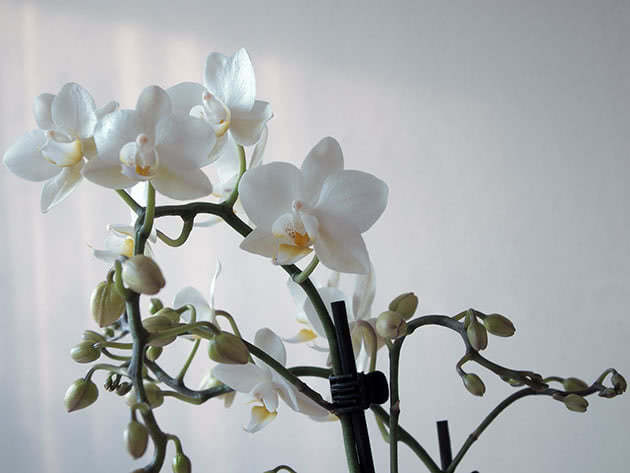

Orchid roots peek out of the flowerpot
It's okay, it's just time for the flower to move to a larger pot. But if the roots of the orchid dry or rot, then urgently need to take action.
Orchid leaves are sluggish
despite regular watering. Chances are, you've over-watered your orchid! Or the pot is too narrow and the root system of the flower is squashed. Another likely reason is too generous watering with long interruptions.
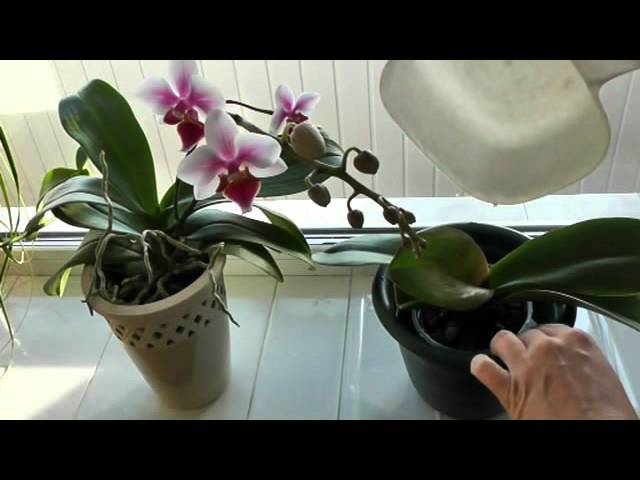

Orchid does not bloom
Despite your best efforts, the orchid does not want to bloom. Most likely, the orchid needs the so-called "heat stress", that is, the same temperature difference between day and night, which should be 8-10 degrees of difference. Or maybe your flower just needs a rest.
- Lavatera: growing from seeds, planting and care
And finally, a few more words in favor of these graceful and beautiful indoor plants. Orchids on the windowsill are also aromatherapy. Pleione maculata orchid smells like apples, Bulbophyllum pictuatum smells like watermelon, and Cychnoches pentadactylon Orchid smells like chocolate!


In addition, according to the teachings of feng shui, orchids stimulate the creative work of the brain and help get rid of depression. And dark red orchids supposedly cure their owner of laziness and apathy.
Re-flowering
Most orchids have legs after flowering that need to be cut off. The exception is the orchid of the Phalaenopsis genus, which has more than 70 species. Once the flowers have withered, the stem should be trimmed above the second or third knot. In this form, the orchid will rest. By giving her "sleep", you can achieve re-flowering.
To do this, it is necessary to process the sleeping bud on the peduncle with a cytokinin paste containing the plant hormone aminopurine or cytokine in another way. A microscopic dose of cytokinin paste accelerates the development, growth and flowering of orchids, stimulates the formation of new buds and the formation of children.
For re-flowering of an orchid on a peduncle, a dormant bud is chosen, the lowest or upper buds are suitable. Then, gently, using tweezers, remove the scales that cover the kidney. On the opened kidney, a light green dot, a tiny drop of paste is applied with a toothpick. A new peduncle will appear within two to three weeks.
As a result, you will be able to enjoy the re-blooming of the Phalaenopsis orchid for many months.
Diseases and pests
The Wanda Orchid is a capricious and very demanding plant. It grows well and blooms only in ideal conditions for itself. Even small mistakes in plant care can lead to quite serious problems with its health and appearance. The most common are listed below.
Most often, Wanda is sick due to insufficient lighting, improper watering regime and the lack of a full rest period. Systematic violations of the rules of care lead to the death of the plant, so errors should be identified and eliminated in a timely manner.
- Wanda rots due to the appearance of pathogenic bacteria, viruses or fungi in the substrate.A favorable environment for their development is low air temperature and excessive humidity. It is very difficult to treat diseases, so it is better to prevent them by taking proper care of the flower.
- Dark spots at the base of the leaves (fusarium) appear as a result of infection with a fungal infection. The affected leaf plates will no longer recover, they are removed. The plant can be cured by carrying out several treatments with Fundazol. Disease prevention is the regular removal of dead roots and leaves.
- Bacterial rot develops in a waterlogged substrate. It manifests itself in the blackening and softening of the roots and stems. An emergency transplant can help save the plant: after cutting off all the affected parts and treating the sections with a fungicide, the orchid is moved to a disinfected container with fresh substrate. Until signs of growth appear, the flower is kept in the shade.
- Wanda's orchid leaves rot usually due to improper watering. If the irrigation regime is not adjusted, rot can capture the stems of the plant and then it will no longer be saved. Damage must be treated immediately and the cause of the occurrence must be eliminated.
- Wanda orchid leaves turn yellow from too little watering, lack of nutrients or long exposure to the sun at elevated temperatures.
- Cracks in the leaves of Wanda appear as a result of hypothermia of the plant after watering, due to "overfeeding" with nitrogen fertilizers, after sunburn or for mechanical reasons. Damaged sheet plates cannot be repaired.
- A heat burn is similar to a sunburn. It occurs due to exposure to high temperatures and manifests itself as brown spots on the leaf plates. Burns do not heal, damaged leaves should be removed.
Among the pests that settle on Wanda, the most dangerous for the plant are thrips, scale insects, mealybugs and spider mites.
Lighting features
It is not for nothing that orchids in their homeland settle on the trunks and branches of trees, there they are provided with a lot of light, but the branches and leaves of the tree save from direct sunlight. So in the apartment they need to find a place where there is enough light. These can be east or west windows, on the south window in summer there is a threat of burns from too active sun. It is better to settle delicate plants on a table near the window, or you will have to cover it with thin paper or cloth. From the north side of the world there will be little even in summer, so you will have to organize additional lighting with fluorescent lamps.
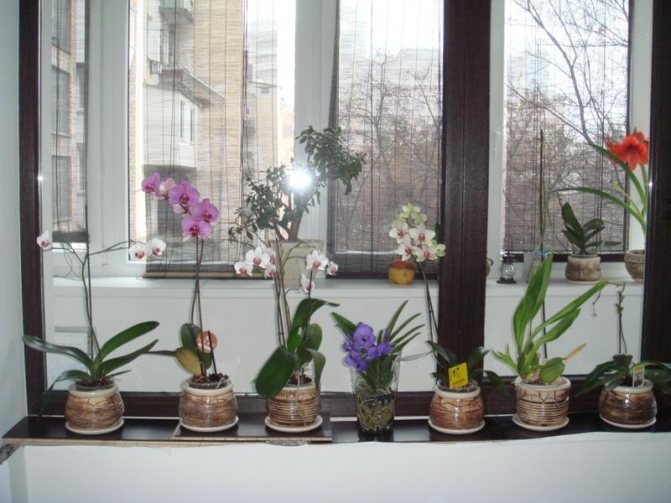

Orchids prefer daylight hours from 13 hours, so lamps will have to lengthen it. When the plant is at rest, natural light may be enough for it, but the period of active growth, flowering, especially if they fall in winter, in our area may be too dark. Phalaenopsis orchids are the most undemanding to light and the most patient. Soft diffused sunlight will allow all parts of the plant to participate in the process of photosynthesis, but do without burns.
Do I need to immediately transplant a flower
Most amateurs are sure that after purchase, the bush should be transplanted. But this is not always justified. Once acquired, the variety does not need to be transplanted. The soil selected for the flower is able to provide the plant with nutrients for two years. But there are situations when a transplant is still advisable:
- It is necessary to replace the pot if the greenery grows on one side and the flower is unstable in the container.
- The substrate contains sphagnum moss.
- If there is little substrate in the container, the trunk of the plant staggers, you need to fill up the soil, or change the flowerpot.
- If destructive changes in the rhizome are visible through the transparent walls of the pot of the phalaenopsis orchid, you must immediately get the bush out of the flowerpot, cut off the damaged roots, disinfect the cut points with charcoal and plant in a new container.
More details about the details and rules of transplantation can be found in the video.
Advice! Florists claim that the adaptation period ends in about a month. During this period, do not disturb the flower and give it the opportunity to "come to its senses."
Proper leaf care
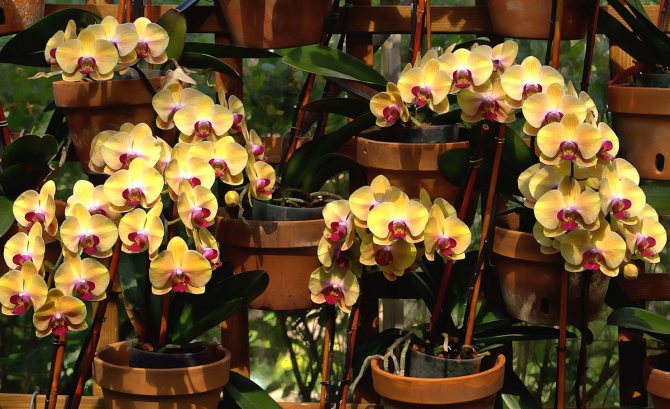

To maintain the beauty and health of orchids, regular spraying of the leaves is required. These exotic plants need high humidity. Periodic spraying moisturizes the leaves, creates a favorable microclimate for the growth of aerial roots of orchids. Protect the orchid from cold air and drafts after spraying.
Knowing the secrets of a beautiful orchid, caring for this exotic flower will turn into pleasure, and admiration - into a constant affection for this flower. Try it! And a piece of blooming tropics will appear on your windowsill.
Tip # 7 - cut it right
Pruning orchids, or rather their wilted inflorescences and peduncles, should also be done according to certain rules, especially phalaenopsis.
Their peduncles develop not only from the base. They can grow from the eye of a dormant shoot bud. In this regard, a wilted peduncle cannot be completely removed. Trimming is carried out only halfway, above the 2nd or 3rd eye.
If you are afraid of doing something wrong, then do not cut the shoots at all. After the appearance of new shoots, the dried tops can be cut off.
Orchids are wonderful flowers of extraordinary beauty. Decorating your home with them is a pleasure. Go for it and you will succeed!


